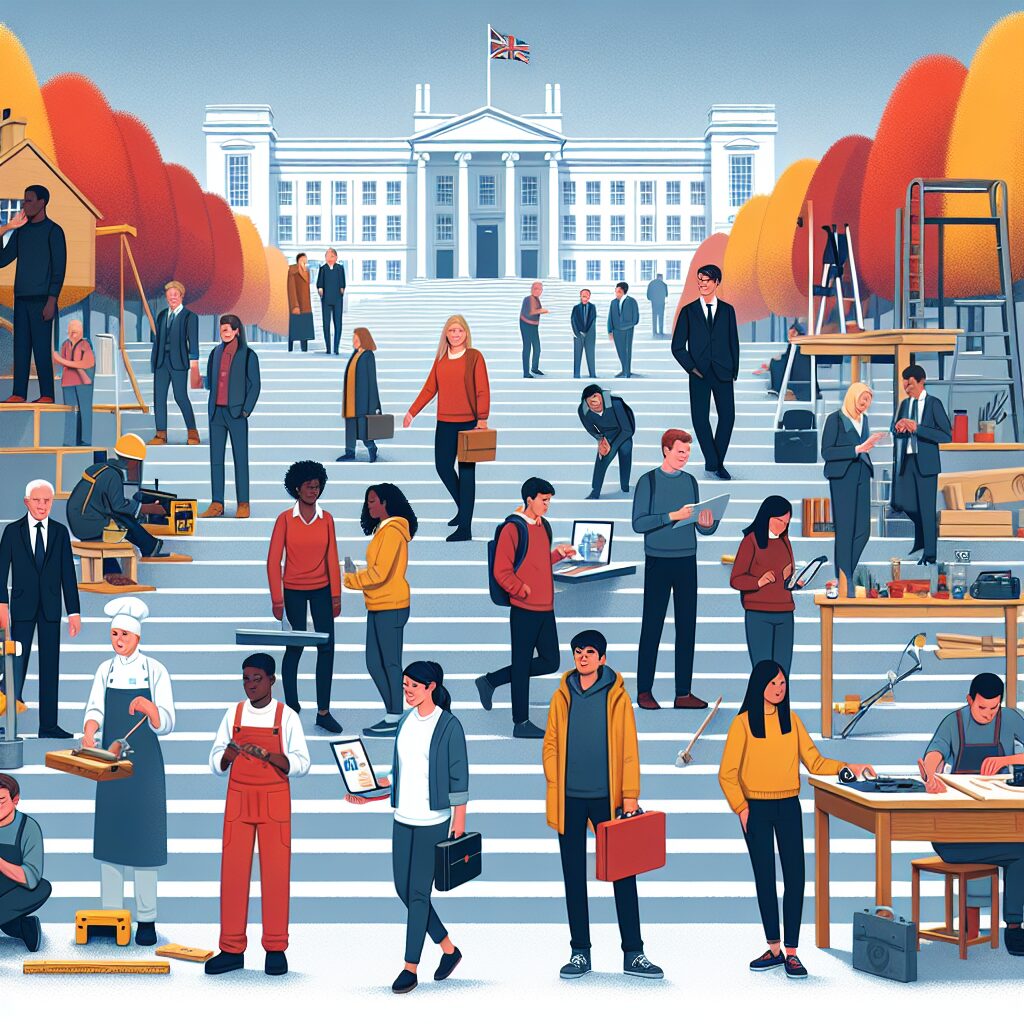
Revitalizing Apprenticeships: A Call to Action for Our Youth’s Future

Apprenticeships at a Crossroads: Why We Must Act Now
Let’s get straight to the point — apprenticeships are in trouble, and the stakes couldn’t be higher. While overall starts have crept up, a closer look reveals a troubling decline at levels 2 and 3. If we don’t address this, we risk leaving our young people in the lurch, and that’s just not good enough. So, what can we do to turn this ship around? Grab a cup of tea and let’s chat.
Understanding the Current Landscape
You might wonder, why should I care about apprenticeships? Well, consider this: these opportunities are essential pathways for young people to gain skills, earn a living, and secure a future. Yet, the recent stats are alarming. The number of apprenticeships for 16- to 18-year-olds is dwindling. If we focus solely on the overall growth of apprenticeships, ignoring the drop in starts for our youth, we ignore vital opportunities for the next generation. And that’s a disaster waiting to happen.
Let’s not beat around the bush. Apprenticeship vacancies are drying up. Employers need to step up and recognise the value of investing in young talent. Building a robust pipeline of skilled workers is more critical than ever. Yet, here we are, at a crossroads.
The Urgency of the Autumn Budget
The upcoming Autumn Budget presents us with a golden opportunity to reignite demand for apprenticeships. If we miss this chance, we’re leaving our youth behind. The funding decisions made will determine the future of these training opportunities. We need to push for increased investment and support for levels 2 and 3 apprenticeships. Stabilisation isn’t enough; we need to reverse the trend.
Now, let’s sprinkle in a bit of hope. Data shows that while the initial starts may be faltering, the rate of apprentices completing their training has improved. This positive trend is promising and could contribute to a strong Quality Assurance Review (QAR) outcome in early 2026. But we mustn’t be complacent. Just because completion rates are on the rise doesn’t mean we can afford to ignore the falling starts.
Quality vs Affordability in Training
Interestingly, the quality of training is becoming less of a concern. What we need to focus on instead is affordability. Recent reports from the Department for Education highlight that spending on apprenticeships is robust. Yet, we continue to hear whispers about underspend. Remember, we are set to spend more on level 7 than initially planned, and the effects of any defunding won’t be felt immediately. We need to get ahead of the game and align with government funds.
Identifying the “enabling” sectors is vital for training providers who want to remain relevant. Fostering partnerships between education providers and businesses can help unlock more opportunities for young people. It’s time we take a collaborative approach to ensure that no apprentice is left behind.
What’s Next for Apprenticeships?
Here’s the million-pound question: how can we collectively drive up apprenticeship starts? It’s going to take a concerted effort from all parties involved. Employers must see the long-term ROI in hiring apprentices. Government entities need to step up their support. Education officers should advocate for inclusion of apprenticeship routes in schools’ career advice. And young people must be made aware of the value and opportunities that apprenticeships can bring.
On a personal note, I’ve always believed that education isn’t just about acquiring knowledge; it’s about making connections and building futures. When I think of the young folks out there eager to learn and grow, it energises me to think we can shape a robust system together.
Reflecting on the Future of Apprenticeships
As we look ahead, let’s not just focus on the numbers. Every statistic represents a person, a potential, a bright future. So, let’s take this moment to challenge ourselves: how can we ensure that every young person who wants an apprenticeship gets one? The future is in our hands. Let’s grab it.
Are you ready to join the conversation? Drop your thoughts in the comments below. Together, we can make a difference.





